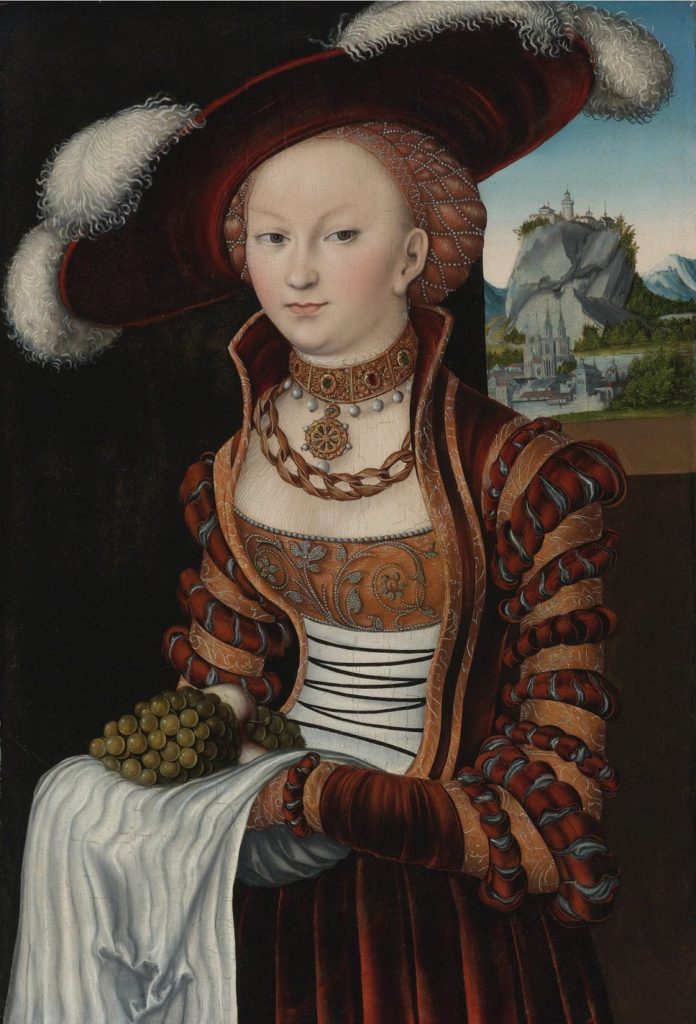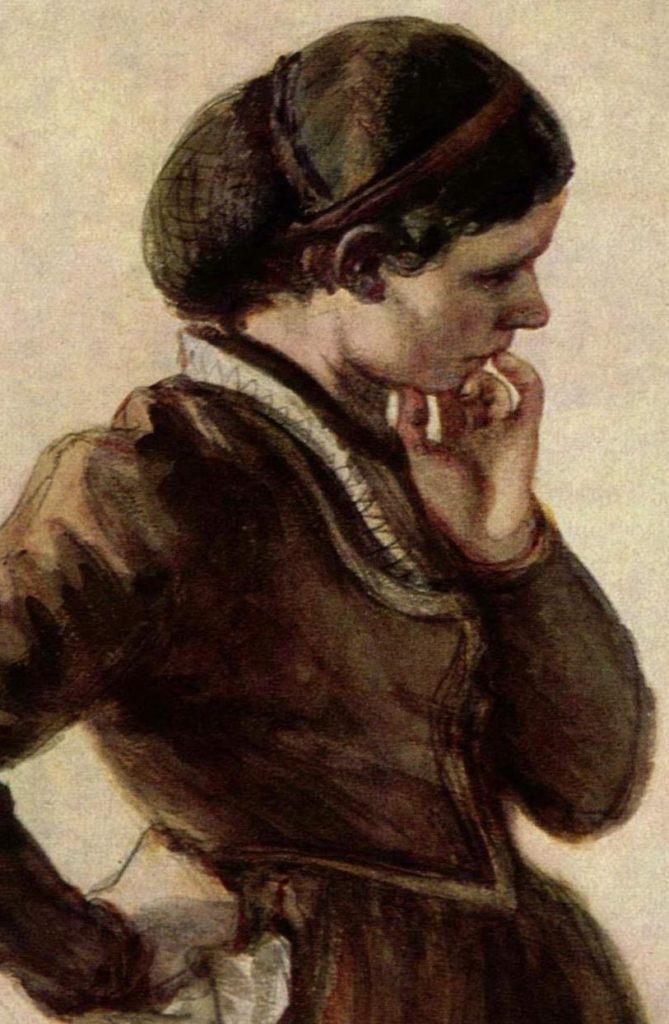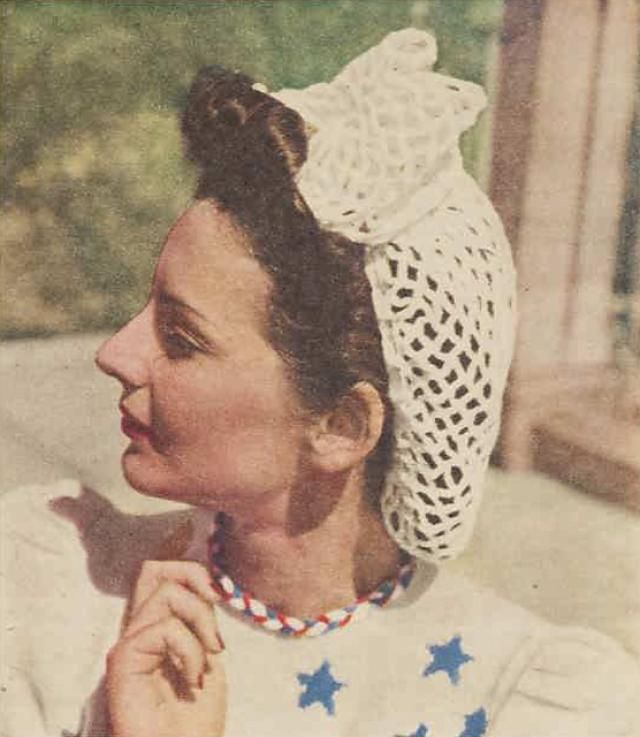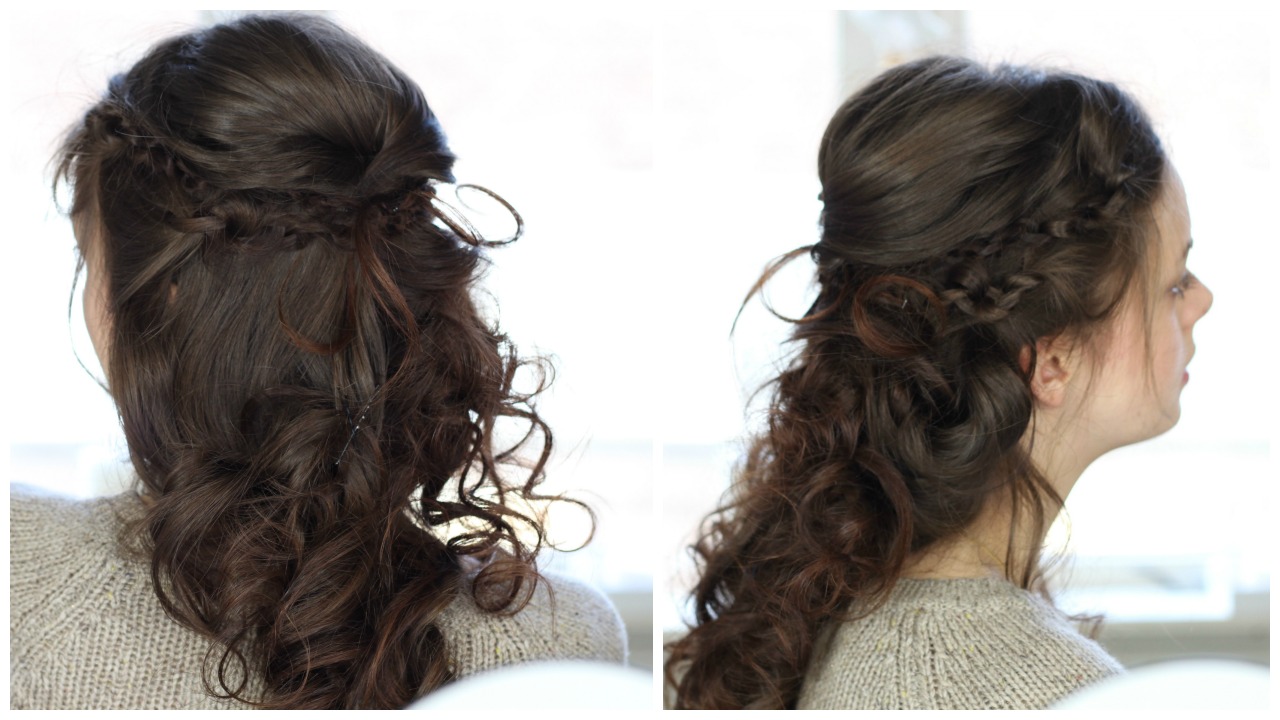Oh, the snood. The iconic crocheted hair net resides among the more advanced levels of vintage wear; I can imagine not everybody would be able to rock this hair accessory with confidence. But don’t be too quick to dismiss the possibility of wearing one: they’re really quite fabulous and incredibly practical. I recently dove into the world of snoods and would like to share some of my findings with you today. Time for some inspiration!
The Early Days
So yes, a snood is technically a hair net, meant to contain a larger body of (generally loose) hair. Little snoods used as bun covers exist as well, but I’m going to focus on the larger version today. Snoods first rose to popularity in the middle ages and renaissance, when the rich wore them as decorated hair accessories adorned with beads, pearls and precious trimmings.


19th Century Snoods
The snood made a brief comeback in the Victorian/Civil War era of the 19th century, although these snoods were generally of a much more modest nature than the elaborate renaissance ones. They served to hold the hair in place and went quite well with the sterner fashions of the period.


1940s Snoods
The best-known type of snood to us nowadays, however, is the one that was worn in the 1940s. Snoods lended themselved perfectly for protecting ladies’ hair from heavy machinery in war effort-related factory work, and proved to be quite fashionable as well. Colours could be mixed and matched with every outfit, and the snoods could be spiced up with various accessories to make them suitable for evening wear.
I created a Pinterest board full of vintage snood inspiration. It contains images of ladies rocking their snoods, both authentic pictures from the 40s and modern women recreating the look beautifully. Feel free to scroll through at your leisure.
DIY Snood Beginner’s Instruction Video
Caught the snood bug yet? Vintage-style snoods can be found through Etsy or vintage reproduction clothing stores, but they’re really easy to make yourself as well. A basic snood can be made in a single evening, even if you’re a beginning crocheter. It’s a really fun process so I highly recommend giving it a go!
The video below is great if you want to crochet your own snood, but don’t have much experience with crochet yet or don’t know how to read a crochet pattern. This lady leads you through the process very clearly.
I made my own snood following her tutorial as well, and I’m really happy with the way it turned out. It was incredibly easy to do, and I’m seriously tempted to make more in different colours.
I used a no. 3 hook, and some shiny pink yarn that my grandma passed down to me.

Vintage Bow Snood Crochet Pattern
If your crochet skills are a bit more advanced, you may enjoy this pattern for a gorgeous snood with a crochet bow on top. This is a vintage pattern from a March 1942 edition of The Australian Women’s Weekly magazine.

CROCHET directions for the smart snood illustrated (above).
It can be crocheted in any color. Black is smart.
Materials Required: One ball of No. 4 knitting cotton and a No. 10 aluminium crochet hook.
Abbreviations: Ch., chain; d.c., double crochet; rep., repeat.
Commence with 57 ch. Make 1d.c. into 9th ch. from hook * 6ch., 1 d.c. into 3rd ch. Rep. from* to end. Turn with 6 ch.
Make 1 d.c. into middle of 6 ch. of previous row, * 6 ch., 1 d.c. into middle of next 6 ch. of previous row. Rep.from * to end.
This row is rep. throughout. Continue until 31 rows have been completed.
Now work 6 ch., 1 d.c. into middle of 6 ch. of previous row, * 3ch., 1 d.c. into middle of next 6 ch. Rep. from * to end.
Continue on around side by working 1 d.c. into each d.c. Fasten off.
Join cotton at op-posite end, and work to match end completed. Do not break off cotton.
Make 4 ch., * 1 treble into first space, 1 ch. Rep. from * all the way around edge. Thread tape or crocheted ch. through edge just completed.
Bow: Commence with 38 ch., 1d.c. into 10th ch. from hook, * 6 ch., miss 3 ch., 1 d.c. into 4th ch. Rep.from * to end. Turn with 6 ch. Make 1 d.c. into middle of 6 ch. of previous row, * 6 ch., 1 d.c. into middle next 6 ch. Rep. from * to end.
Rep. this row until bow is length required, about 50 rows.
Last Row: Turn with 6 ch., 1 d.c.into middle of 6 ch. of previous row,* 4 ch., 1 d.c. into middle of next 6 ch. Rep. from * to end.
Sew bow in position as in picture. Do not knot.
Is a 1940s snood something you’d wear? Let me know! Also, stay on the lookout for Thursday’s video, where I show the process of making my snood and three ideas on how to wear it.







One thing to note is that crochet’s a 19th century technique. I’m not certain what was used in renaissance times, one Leonardo painting is almost certainly leather lace held together with stitching: you xan see thickness to the net. Equally, fine netting would not be impossible.
Snoods are neat. I picked up one at a Renaissance Festival, and crocheted one with beads also.
Unfortunately, because my long hair is very very fine, it tends to just fall out through the holes, becoming very straggly. 😕
If one has thicker, more curly hair, I imagine it’d be a great way to contain the length in a pretty way.
I’ve been curious since your IG post, and I’ve been wondering if it might be appropriate for my line of work (it’s a dusty environment) for when I might not want to wreck my natural waves with ye olde bun.
However, I’m surprised at the instructions…a number 10 hook? Is that perhaps not the same size system of our modern mm hooks?
Perhaps, but maybe the instructions call for very large crochets..? Most modern instructions I’ve found use a number 4 hook, I used a 3 myself but my netting is quite fine. I guess using a larger hook might help stretch the whole thing out a little. I found that a UK/Canada number 10 hook converts to a 3.25 in metric systems so that might be something to consider, but since the instructions are from Australia that might not be the case either (they use the metric sizes as far as I’m aware)
A quick googling helps not even a little bit, but there are so many hook sizing systems it’s more likely than not that it’s got nothing to do with any 10mm hook we know.
Google also says the UK switched to metric in the 60s, and Australia in the 70s, so that supports the theory.
You might think I could’ve googled this yesterday before making that comment above, but clearly in the timeframe of 11pm-1am I do not do my smartest thinking *shrug*
I also did think of the possibility of a bigger hook being used on purpose for stretch, but I thought it’d be too big a size for that…but it might be a matter of experimenting, I guess